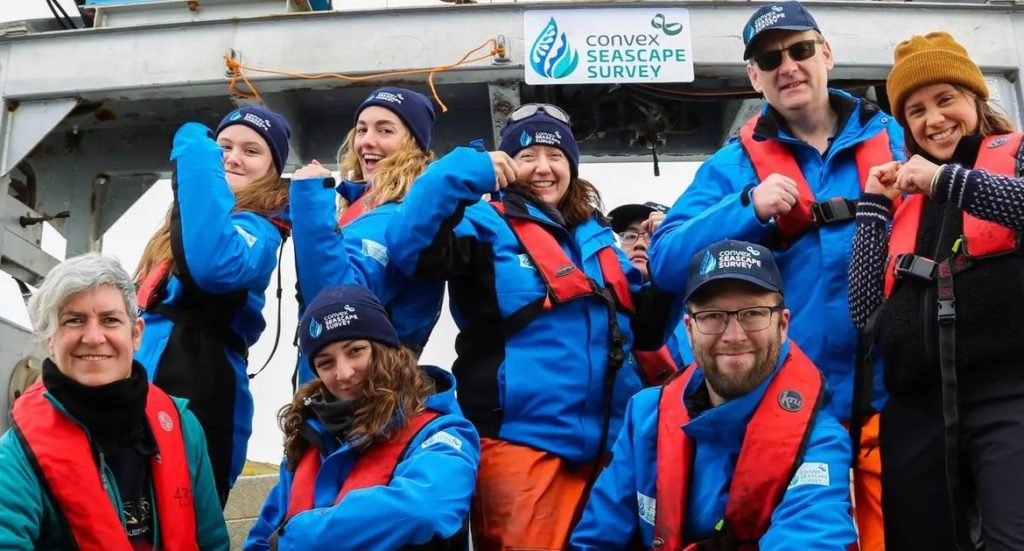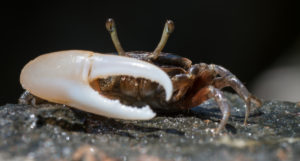Great British Bioturbation-athon to unlock secrets of the seafloor in fight against climate change

This week, Scotland is hosting a first-of-its-kind experiment to determine the carbon storage potential of the ocean floor, and the role of the creatures that live on and in it – increasing vital knowledge in the fight against climate change.
The self-named ‘Great British Bioturbation-athon’ is the first field study of the Convex Seascape Survey – a project in partnership between Blue Marine Foundation, the University of Exeter and Convex Group Ltd, which seeks to answer some of the biggest questions relating blue carbon in the seascape and climate change resilience.
Over the course of ten days, scientists from the universities of Exeter and Southampton are conducting the study at the Field Studies Council in Millport on the Isle of Cumbrae in Scotland, investigating the rates at which seabed creatures move – and potentially help to store – carbon in the seafloor.
These bottom-dwelling creatures, such as clams, worms, shrimps and brittle stars, mix seafloor sediments and in turn draw down carbon into the muddy layer of seafloor – a process known as bioturbation.
The experiment aims to determine the rate at which this process occurs, for as many species as possible.
Dr Ceri Lewis, Associate Professor in Marine Biology at the University of Exeter, is one of the Lead Researchers for the Convex Seascape Survey and is heading up the field experiment.
She said: “Bioturbation, the mixing that happens when organisms burrow in the mud, is an extremely important process that happens on the seafloor.
“But we only know about it for a few species, and there are hundreds of species that live in benthic muds.
“These species are important for biodiversity, but they might also play a vital role in moving blue carbon around.
“We need to understand how much they help bury that carbon into deeper muds, where it is sequestered and locked away.”
Convex Programme Manager Gabriella Gilkes, from Blue Marine Foundation, said: “The ocean is our greatest ally in reducing global warming, at this time of runaway climate emergency.
“However, we are currently working on best estimates to what the ocean’s potential role could be, so I’m delighted that we are conducting our first field experiment in Millport.
“This is the first step in helping to understand the role of the extraordinary flora and fauna that lives on the seabed in the moving of sediment and ultimately helping to unravel the mysteries of the carbon storage capacity of the seafloor.”
The ocean covers 70 per cent of the earth’s surface and makes up 95 per cent of the planet’s biosphere, making it the largest area capable of capturing and storing carbon. But where is that carbon?
How did it get there and where did it come from? And what is the role of biodiversity in ocean carbon storage?
We still don’t know how far down the blue carbon travels down into the muddy layer, how much of it stays in the muddy layer and how much of it is being mixed around.
This is exactly what the Great British Bioturbation-athon sets out to discover, on a scale never seen before.
Martin Solan, Professor of Marine Ecology at the University of Southampton, has dedicated his life’s work to understanding the bioturbation process.
In reference to this first Convex experiment, Professor Solan said “The sediments around our shores are extremely diverse, with as many as 100-150 species in a square metre of sediment, whose activities each contribute to nutrient and carbon cycles.
“Every minute of every day, globally, a volume of sediment equivalent to 12.5x the volume of Mount Everest is mixed by animals that live in the sediment.
“This is equivalent, or enough to cover the metropolitan area of London under 13km of mud.”
The common harbour ragworm Hediste diversicolor will be one of many key subjects in the experiment.
There can be hundreds to thousands of these worms per metre squared, all performing an important ecosystem service, “bioturbating”.
Living in estuarine environments, they have paddle-like legs called parapodia, allowing them to burrow in fine and silty muds.
These worms create a network of burrows up to 20cm deep, which help stabilise sediments.
While feeding on the surface, they excrete a web of mucus, that when they draw back down into their burrows captures their food as well as other organic matter from the seafloor.
This organic matter, containing carbon, is drawn downwards into the muddy layer beneath the surface – storing carbon in the seafloor.
Dr Lewis explained: “The bioturbation experiments that we are doing in Scotland will then help us narrow down our key champions of bioturbation, which we will then bring back to our fantastic research aquarium at the University of Exeter where we will be doing some detailed experiments really looking at following the carbon.”



